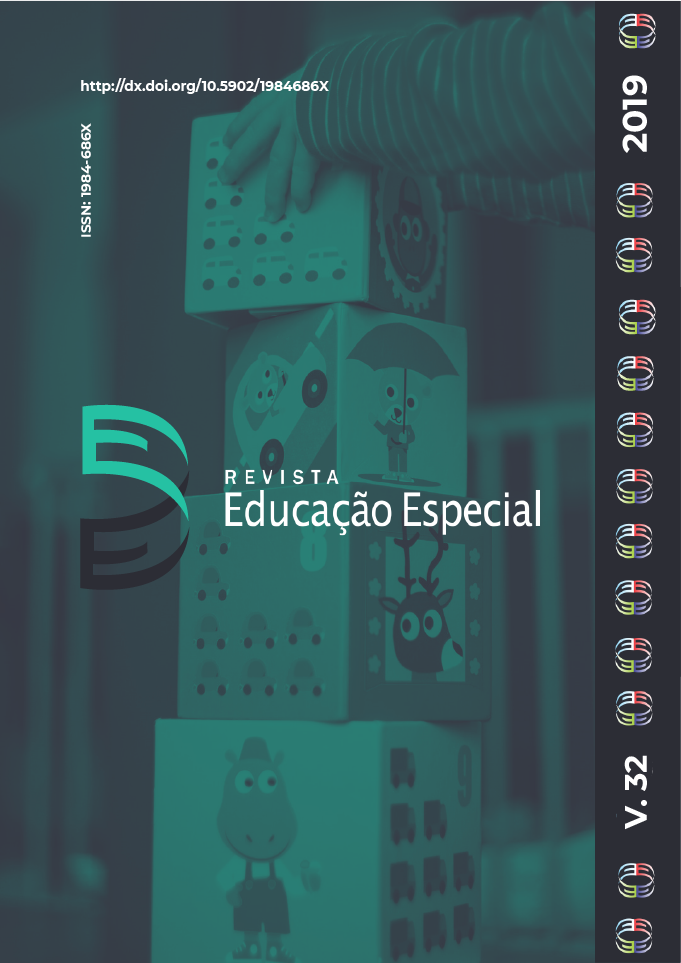Teaching Portuguese and Deaf in São Tomé and Príncipe: from a paradigm of exclusion to inclusion
DOI:
https://doi.org/10.5902/1984686X38270Keywords:
Literacy, Deafness, Inclusive educationAbstract
In Sao Tome and Principe and until 2013, Deaf children did not attend to school because, according to the teachers, they did not "learn anything". Isolated, without other peers to communicate, they felt unprotected and outcast in a society that did not welcome them. In 2013, due to the humanitarian missions of otolaryngology, this situation was detected and a project for educational inclusion was proposed. From a linguistic emergency project where the Sign Language of São Tomé and Príncipe was born, a "pilot group" was created, integrating 1st enrolled Deaf students in the regular school. In this process, a Portuguese handbook for the deaf was prepared. This handbook starts from the Sign Language of São Tomé and Príncipe to the comprehension and learning a second language from a different modality. In this descriptive article, we intend to interweave the two projects, showing and discussing the scientific and pedagogical options taken so that exclusion can be achieved.
Downloads
References
CARMO, Patrícia; OLIVEIRA, Ricardo; MINEIRO, Ana. Dicionário da Língua Gestual de São Tomé e Príncipe - Dicionário Oficial da República Democrática de São Tomé e Príncipe. Lisboa: UCEditora, 2014.
CAROÇA, Cristina; CAMPELO, Paula; SILVA, Susana Nunes; PAÇO, João. Surdez em São Tomé e Príncipe: Análise de 2 anos de missões humanitárias. Revista Portuguesa de Otorrinolaringologia e Cirugia Cérvico-Facial, Lisboa, n. 1, Vol. 54, p. 5 - 11, mar. 2016.
CARVALHO, Paulo. História de Educação de Surdos, I. Lisboa: UCEditora, 2009.
CARVALHO, Paulo. História de Educação de Surdos, II. Lisboa: UCEditora, 2011.
INSTITUTO NACIONAL DE ESTATÍSTICA SÃO TOMÉ E PRÍNCIPE. IV recenseamento geral da população e da habitação 2012 (iv rgph 2012) - resultados nacionais. São Tomé, São Tomé e Príncipe; INESTP: 2013.
MINEIRO, Ana; CARMO, Patrícia. Língua Gestual de São Tomé e Príncipe: retrato dos primeiros gestos. Revista de Estudos Linguísticos da Universidade do Porto, Porto, vol. 11, p. 161-182, 2016.
PALHA, Sebastião; MINEIRO, Ana. Na Escola da Rosa e do Tomé – Manual de Português para Surdos. Lisboa: UCEditora e Instituto Marquês Valle de Flôr, 2019.
WORLD HEALTH ORGANIZATION. In: https://www.who.int/deafness/en/. Acesso em: 29 mai. 2019.
Published
How to Cite
Issue
Section
License
Declaration of originality
We declare that all articles present in the journal Revista Educação Especial (UFSM) are originals and were not submitted for publishing on any other publication, as a whole or a fraction. We also declare that, after being published by Revista Educação Especial (UFSM), a paper will not be submitted to another journal within two years. After this time, our journal transfers the publishing rights to the authors, with a permit granted by the Editorial Council.
We also acknowledge that the originals’ submission to Revista Educação Especial (UFSM) implies on a transference of copyright for physical and digital publishing to the journal. In case of noncompliance, the violator will receive sanctions and penalties predicted by the Brazilian Copyright Protection Law (n. 9610, dated 19/02/98).







